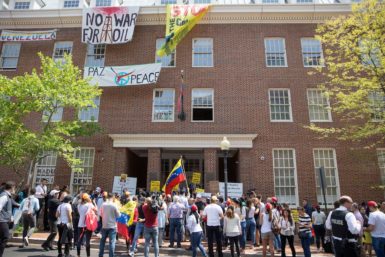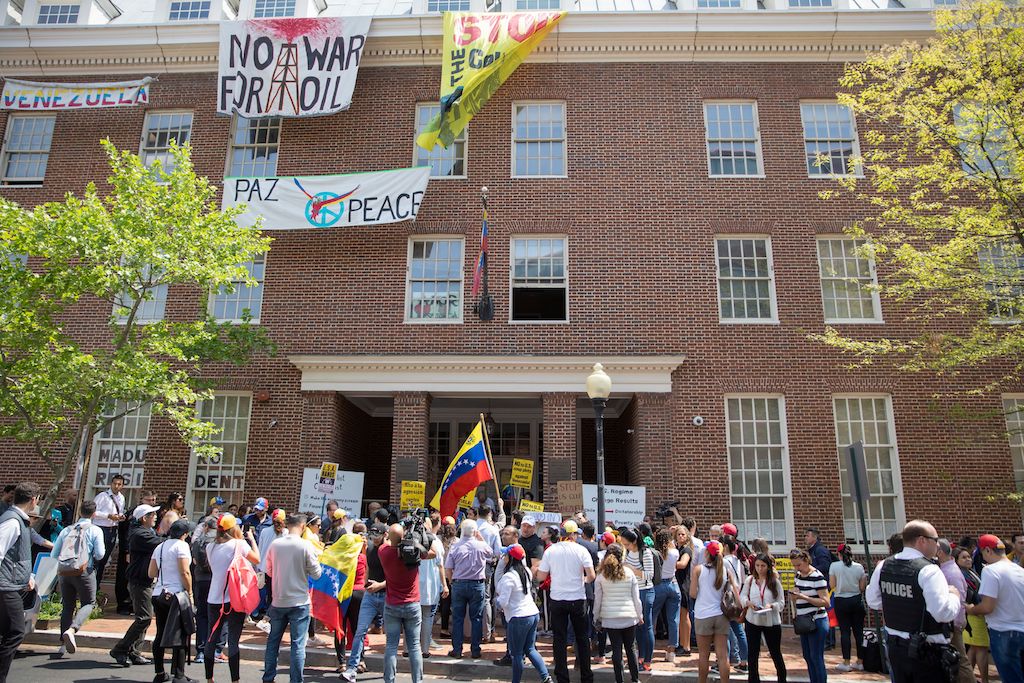[ad_1]

A protest outside the Venezuelan embassy in Washington, D.C., from which paintings have reportedly been stolen.
ERIK S LESSER/EPA-EFE/SHUTTERSTOCK
A number of recent cases of missing art involve government officials around the world, according to a report published by the Art Newspaper.
The analysis underscores growing concerns about abuses of power on the diplomatic level. The notion of diplomatic immunity has become a flash point of late, with Anne Sacoolas, the wife of a United States diplomat to the United Kingdom, named as a suspect in a car crash that killed a British teenager.
TAN‘s piece said that Ladislav Otakar Skakal, a former honorary consul at the Italian embassy in Cairo, is alleged to have stolen over 21,000 artifacts from his host country, and Egypt’s attorney general has issued an international request that he stand trial. Additionally, paintings by Armando Reverón, Héctor Poleo and Manuel Cabré are now missing from the Venezuelan embassy in Washington, D.C.
“Diplomatic pouches are not normally checked at a border when leaving a country of origin,” Till Vere-Hodge, an art and cultural property lawyer, told the publication.
Similar cases in recent years include the 2011 theft and fire at the British Embassy in Libya, from which £130,000 (about $167,000) worth of art was lost. In 1992, a Joachim Wtewael painting stolen from Moscow by the wife of the Togo ambassador showed up at Sotheby’s in London—that case was heard in the U.K.’s high court, which ruled that the work had to be returned to Germany, where it was originally looted in 1945.
“Once an object has been illegally moved across borders, that blemish on the object won’t disappear just because you are a diplomat,” Vere-Hodge told TAN.
[ad_2]
Source link

